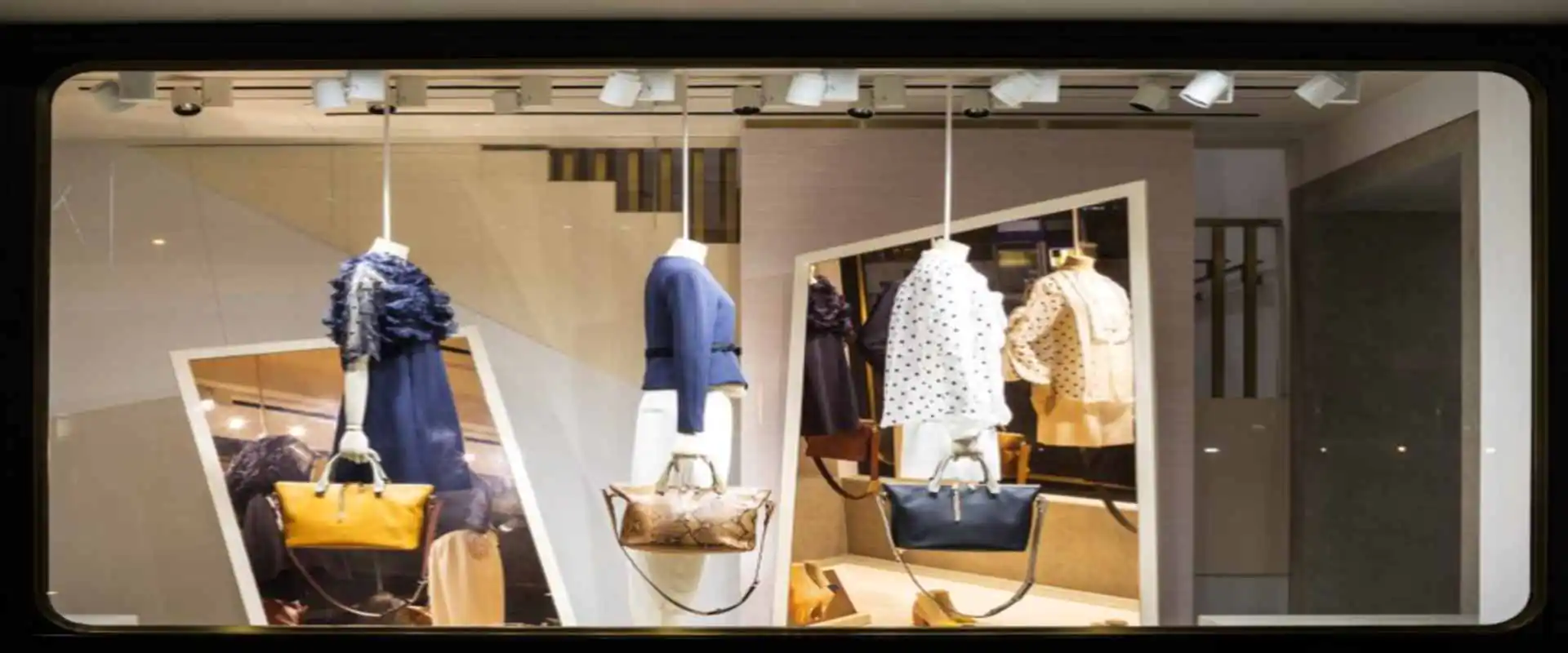Written By: Associate Vice President, Analytics and Data Strategy, Quantzig.
Visual merchandising is a concept in the retail business that promises to improve the aesthetic appeal of a product or store. This helps in seeking the attention of customers and increase sales, which means if you want the performance of your store to improve, you cannot afford to have a store with ineffective and unappealing in-store displays. But, it is also essential to understand that visual merchandising is also about different retail designs. Some of the fundamental ways through which retailers can attain success in visual merchandising are window displays, impactful store layout, informative display of products, and much more. In this article, we have highlighted a few critical elements of visual merchandising that can help you optimize your store’s layout and product displays for maximizing revenue.
Book a demo to experience the meaningful insights we derive from data through our ai capacity planning analytical tools and platform capabilities.
Request a Free DemoTable of Contents
What is Visual Merchandising?
Visual merchandising is a powerful marketing technique that involves the strategic use of lighting, color, displays, technology, and floor plans to present products in an appealing manner. Its goal is to captivate shoppers, enhance the shopping experience, and drive sales. By employing creative and artistic displays, visual merchandising not only draws customer attention but also communicates a brand’s message and values effectively.
The Importance of Visual Merchandising
Visual merchandising plays a crucial role in shaping customer perceptions and influencing purchasing decisions. Its benefits extend beyond mere aesthetics, as it creates immersive shopping environments that foster customer loyalty, improve brand visibility, and optimize store operations.
| Key Aspects | Description |
|---|---|
| Captures Attention | Eye-catching displays and arrangements grab customers’ attention, increasing their likelihood of exploring the store. |
| Enhances Brand Image | Thoughtfully designed displays mirror the brand’s identity and values, reinforcing a positive brand image. |
| Encourages Purchase Decisions | Well-executed displays can influence customer decisions, leading to both planned and impulse purchases. |
| Creates a Memorable Shopping Experience | A visually compelling environment makes shopping enjoyable and memorable, encouraging repeat visits and customer loyalty. |
| Differentiates from Competitors | Unique and creative merchandising techniques set a store apart, helping it stand out in a competitive market. |
| Optimizes Store Layout | Strategically placed products and displays ensure smooth customer flow, enhancing navigation and maximizing store space. |
| Integrates Seasonal and Promotional Themes | Visual merchandising allows stores to seamlessly incorporate seasonal themes and promotions, keeping the store fresh and relevant. |
| Showcases Product Features | Product displays highlight key features and benefits, educating customers and helping them make informed decisions. |
| Promotes Cross-Selling and Up-Selling | Strategic placements encourage customers to explore complementary products, boosting cross-selling and up-selling opportunities. |
| Creates Social Media-Worthy Moments | Visually appealing displays and store designs encourage customers to share their experience on social media, providing organic promotion. |
Visual merchandising goes beyond mere product display; it is a strategic tool that drives customer engagement, enhances brand perception, and directly impacts sales. By curating visually appealing environments, businesses can not only attract customers but also create memorable shopping experiences that foster brand loyalty.
Experience the advantages firsthand by testing a customized complimentary pilot designed to address your specific capacity planning requirements. Pilot studies are non-committal in nature.
Get a free pilot
Elements of Visual Merchandising
Visual merchandising plays a crucial role in the retail industry, acting as a powerful tool to capture customer attention and drive sales. Successful visual merchandising involves strategically using various elements to create an engaging shopping experience. Below are the key elements of visual merchandising, with detailed insights into their importance and application:
| Element | Description |
|---|---|
| 1. Color is King | Color plays a pivotal role in attracting customer attention. As a critical element in in-store retail analytics, the right use of color can enhance product appeal and drive sales. Retailers should coordinate colors effectively to create harmonious, eye-catching displays. Contrasting colors can be particularly impactful in making displays stand out. |
| 2. Maximum Display | The more merchandise on display, the better the customer experience. A circular store layout is often more effective than traditional layouts, as it allows customers to view a wider variety of products. Retailers should aim to maximize the display area, offering a comprehensive range of options to increase the likelihood of conversions. |
| 3. Storytelling | Creating a compelling story around products is essential in visual merchandising. Stories can help customers connect emotionally with products, emphasizing their benefits and value. This storytelling approach not only enhances the visual appeal but also enables in-store retail analytics to better understand customer needs and preferences, ultimately driving sales. |
| 4. Empty Spaces | Often overlooked, the space between the merchandise and the ceiling can be utilized to enhance customer engagement. Retailers can use this space to display product information, brand stories, or customer testimonials, further supporting the overall retail strategy. By utilizing this underused space, retailers can create a more informative and visually appealing environment. |
| 5. Point of Focus | Establishing a clear focal point within the store is crucial for drawing customer attention to key products. A well-placed focal point can significantly impact sales. Retailers should ensure that prominent merchandise is strategically positioned in hotspots that are easily visible and accessible to customers. |
| 6. Landscaping | Landscaping involves elevating prime products to ensure they stand out from the rest. By using asymmetrical arrangements or specific elevation techniques, retailers can highlight special items, guiding customer interest and encouraging purchases of featured products. |
| 7. Lighting | Effective lighting can bring out the best in a store’s visual displays. By using spotlights or ambient lighting, retailers can highlight specific products and create a welcoming atmosphere. Proper lighting not only enhances product visibility but also contributes to the overall shopping experience, encouraging longer customer engagement. |
| 8. Texture | Texture contrast plays a key role in enhancing visual appeal. By combining different textures that complement or contrast with the products, retailers can create more dynamic and engaging displays. This can help in drawing customer attention and boosting sales. |
| 9. Décor | The final element of visual merchandising is the overall store décor. A well-thought-out décor plan should complement the store’s theme and visual displays. Furnishing and decorations that align with the brand’s identity and aesthetic can enhance the customer experience and solidify the store’s image. |
In summary, effective visual merchandising is not just about arranging products; it’s about creating an immersive shopping experience that resonates with customers on multiple sensory levels. Retailers should carefully plan each element, from color schemes to lighting, to ensure that their displays not only attract attention but also encourage purchases.
By strategically implementing these elements, retailers can transform their store environments, making them more visually appealing and conducive to higher sales, ultimately leading to greater customer satisfaction and brand loyalty.
Quantzig’s retail analytics solutions help businesses to optimize merchandise assortment and store-front layout.
Request a free proposal nowVisual Merchandising for Business
Retailers can make use of visual merchandising in many shapes and sizes. Visual merchandising can promote brand recall by placing multiple brand signages across the retail premises. Signages can also be used to communicate key messages to customers.
Another way that retailers can effectively use visual merchandising is with the help of window displays. Creating a visually striking display of products can gain people’s interest and build a positive brand image. These displays can also be customized to events or seasons.
Visual merchandising is of the utmost importance in floor plan designing and layout. All the elements of visual merchandising must be taken into account to create a visually appealing experience for customers. Impactful displays, coupled with price promotions will attract customers and add to sales.
By understanding the importance of visual merchandising and incorporating these elements, retailers can create a compelling and immersive shopping environment that resonates with customers and drives business success.
Final Thoughts
In today’s competitive retail landscape, leveraging the power of visual merchandising is essential for differentiating your brand, optimizing the shopping journey, and driving revenue growth. From capturing attention to promoting social sharing, visual merchandising remains a critical element in creating a successful retail strategy.
Effective visual merchandising strategies are crucial for capturing customer attention and driving sales. In retail visual merchandising, it’s important to implement creative visual merchandising display ideas that align with current visual merchandising trends to create an appealing store atmosphere. By using innovative visual merchandising techniques, retailers can enhance the shopping experience, particularly in sectors like visual merchandising in fashion, where aesthetics play a key role. For visual merchandising for retail stores, following essential visual merchandising tips ensures cohesive design, while effective store visual merchandising creates an engaging environment that promotes both product visibility and brand identity.




